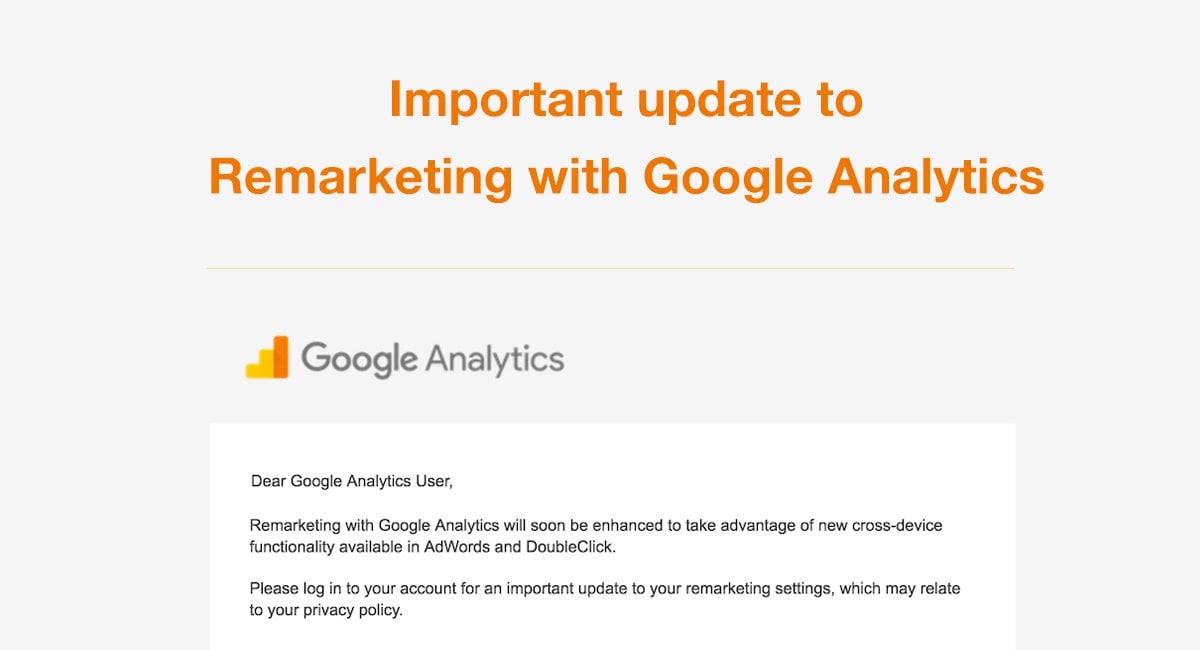Comprehending the Power of Remarketing In Google Analytics
Comprehending the Power of Remarketing In Google Analytics
Blog Article
Optimize Your ROI With Remarketing in Google Analytics
By harnessing the power of customer information and tailoring advertisements to particular audience segments, organizations can dramatically enhance their conversion rates. The trip to making the most of ROI with remarketing is a nuanced course led with insights and possibilities that can reshape the trajectory of your advertising and marketing endeavors.
Recognizing Remarketing in Google Analytics
Understanding remarketing in Google Analytics is crucial for enhancing your digital advertising and marketing method. Remarketing permits you to target users who have formerly seen your web site or interacted with your application, offering them with tailored advertisements as they surf various other websites or utilize various other apps within the Google Display Network. This approach helps keep your brand top of mind and motivates users to go back to your website, ultimately boosting the possibility of conversion.
By using Google Analytics, you can track the performance of your remarketing projects, getting important understandings right into user habits, involvement, and conversions. This information enables you to improve your targeting, bidding, and messaging methods to enhance the general performance of your projects.
In addition, comprehending the various types of remarketing lists offered in Google Analytics, such as conventional, vibrant, and similar audiences, permits you to create extremely fractional and tailored projects customized to particular customer segments. This degree of granularity can significantly enhance the relevance and influence of your remarketing efforts, inevitably optimizing your roi.
Establishing Up Remarketing Listings
To successfully implement remarketing projects in Google Analytics, the first action entails configuring and developing remarketing lists targeting certain user sections based upon their interactions with your site or app. By establishing remarketing lists, you can customize your advertising efforts to reach individuals that have currently shown passion in your product and services.
To begin, navigate to the Admin area of your Google Analytics account and select the Residential property where you intend to produce the remarketing listing. Under the Building column, click on 'Audience Definitions' and select 'Audiences.' Next off, click on the red 'New Audience' button and select 'Create New' to specify the parameters for your remarketing list.

Crafting Reliable Remarketing Ads

When crafting your advertisements, concentrate on producing attention-grabbing headings and compelling visuals that stick out to possible clients. Incorporate strong calls-to-action that encourage individuals to review your website and finish a preferred action. Make use of dynamic remarketing to reveal individualized advertisements including products or services that individuals have formerly seen on your website.
Furthermore, guarantee that your advertisements are mobile-friendly since a substantial part of internet traffic originates from mobile discover this tools. Examination various ad variations see to determine which styles and messages drive the most effective outcomes. By continuously refining and enhancing your remarketing ads based upon efficiency data, you can optimize their performance and boost your roi.
Studying Remarketing Performance
Through Google Analytics, marketing professionals can track the performance of their remarketing campaigns in real-time, enabling them to determine trends, patterns, and areas for improvement without delay. By analyzing the information, marketers can determine which advertisements are carrying out well, which audience segments are reacting favorably, and which networks are driving the most conversions. This degree of granularity allows marketing experts to make data-driven choices to maximize their remarketing projects for much better outcomes.
Enhancing ROI With Remarketing
Assessing remarketing data in Google Analytics enables online marketers to determine opportunities for maximizing roi (ROI) with calculated changes - What Is “Remarketing” In Google Analytics?. To look at this website maximize ROI with remarketing, it is important to recognize the habits of your target market. By evaluating customer communications, such as the pages they saw, the items they watched, or the activities they handled your website, you can customize your remarketing projects better
Segmenting your audience based upon their habits permits you to develop tailored and targeted ads that are much more most likely to resonate with them. By showing relevant advertisements to details sectors of your target market, you can raise the possibilities of conversion and ultimately enhance your ROI.
Additionally, evaluating various ad creatives, messaging, and offers can help determine what resonates finest with your audience. A/B testing allows you to trying out different components of your advertisements to determine what drives the highest possible engagement and conversion rates.
Conclusion
In conclusion, making best use of ROI with remarketing in Google Analytics requires a strategic technique to examining user behavior, segmenting target markets, producing tailored advertisements, and optimizing project performance. By leveraging data-driven understandings and examining various techniques, businesses can improve their remarketing initiatives to drive higher interaction and conversion rates. This systematic technique ensures that sources are successfully designated towards taking full advantage of returns on financial investment in remarketing campaigns.
Next off, click on the red 'New Target market' button and select 'Produce New' to specify the criteria for your remarketing listing.
By constantly refining and optimizing your remarketing advertisements based on performance data, you can maximize their efficiency and enhance your return on investment.
By delving right into these insights, marketing experts can obtain a comprehensive understanding of just how their remarketing efforts are reverberating with their target audience and driving conversions. To make the most of ROI with remarketing, it is important to comprehend the actions of your audience.In verdict, maximizing ROI with remarketing in Google Analytics needs a tactical technique to evaluating customer actions, segmenting target markets, creating customized ads, and optimizing project efficiency.
Report this page